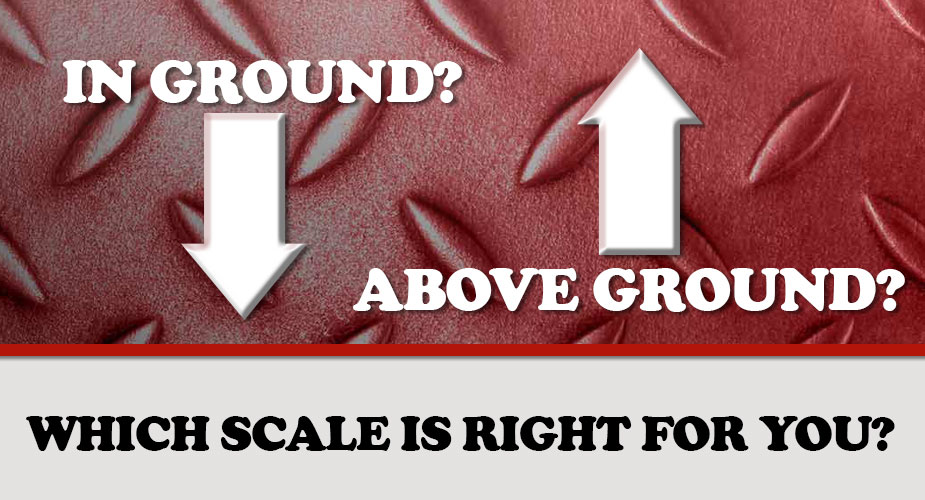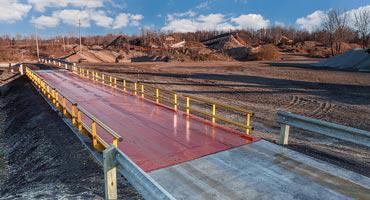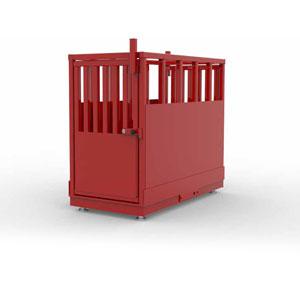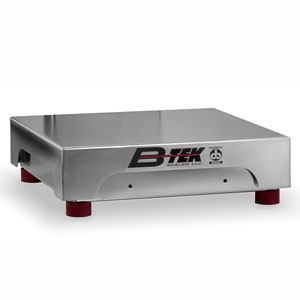The B-TEK Learning Center
Resources to help you scale your business with B-TEK.

Confused as to whether you would like a more portable floor scale that sits above ground or a more accessible in-ground style floor scale? This article looks at the advantages and disadvantages of both applications while helping you make a more informed decision.
A floor scale is a type of scale that can be used directly on the floor (above ground), usually sticking up around 4", or in the floor at current grade level (pit or in-ground).
There are two main reasons why you would choose one over the other.
- The amount of space the floor scale occupies
- The ease of loading products onto the scale
Pit Type Floor Scale

Several years ago, placing a floor scale into a pit was common. This was mainly due to a couple of factors: floor scales had taller profile heights and construction costs to form a pit were less expensive.
While today's floor scales have a lower profile design which usually eliminates the need for a pit, there are a few applications where a pit scale still makes sense.
Take, for example, a company that needs a 4' x 4' floor scale with ramps on both sides. A typical ramp is 36" in length on each side. This type of floor scale setup will take up 10 ft. in length and 40 square feet overall. That's a lot of space for a simple 4' x 4' floor scale. When the scale footprint needs to be smaller, scales will be placed into a pit. When placing this scale into a pit, the ramps are not needed. This eliminates 3 ft. of ramping on each side of the scale and 24 square feet total.
Another reason for placing a floor scale into a pit is the ease of getting the product onto the scale. Because the scale is set in a pit, the transition from the floor surface to the scale is seamless. Imagine having to push a loaded pallet jack onto an above-ground scale several times per day. Having a pit-type scale makes this process much easier vs. one with ramps. You can also purchase a more heavy-duty floor scale that allows a forklift to drive right onto a pit-type floor scale to obtain the most accurate weights at the quickest rate.
Floor Scale with Ramps

Today's floor scales are built to have a low profile - usually around 4-5". When space isn't an issue, having a floor scale with ramps may make sense. Ramps can be custom-made to the length needed. Having a longer ramp makes loading products with a pallet jack easier.
Another reason many people choose to use an above-ground floor scale with ramps is that this setup is portable and can easily be moved to different parts of a warehouse or factory.
Note that ramps aren't required with an above-ground floor scale. So standard pallet weighing while loading/unloading the scale with a forklift is the most portable and cost-effective solution yet.
Another variable to consider is the potential to outgrow the size of your floor scale. If you need a different model, an above-ground floor scale can easily be replaced without needing to backfill a hole in your floor.
Other Options
Outside the typical floor scale, there are many other options that may work better for your application. One type of scale is a U-Style pallet floor scale. The U-Style pallet floor scale is designed for use in a variety of industrial, commercial and agricultural applications where mobility and speed of loading and unloading are required. The open-framed design facilitates weigh bars in a 48" x 48" footprint and includes heavy-duty handles and casters for ease of mobility.
In some instances, you may also opt for a forklift scale to obtain weights even quicker than any of the options mentioned above. The efficiency of a forklift scale does come at a price, however. Forklift scales are often significantly less durable and less repeatable than a floor scale or U-Style Scale.
We hope this information helps you make the correct decision when deciding where to put your next floor scale. As always, if you need any further assistance please feel free to contact us here at B-TEK.








